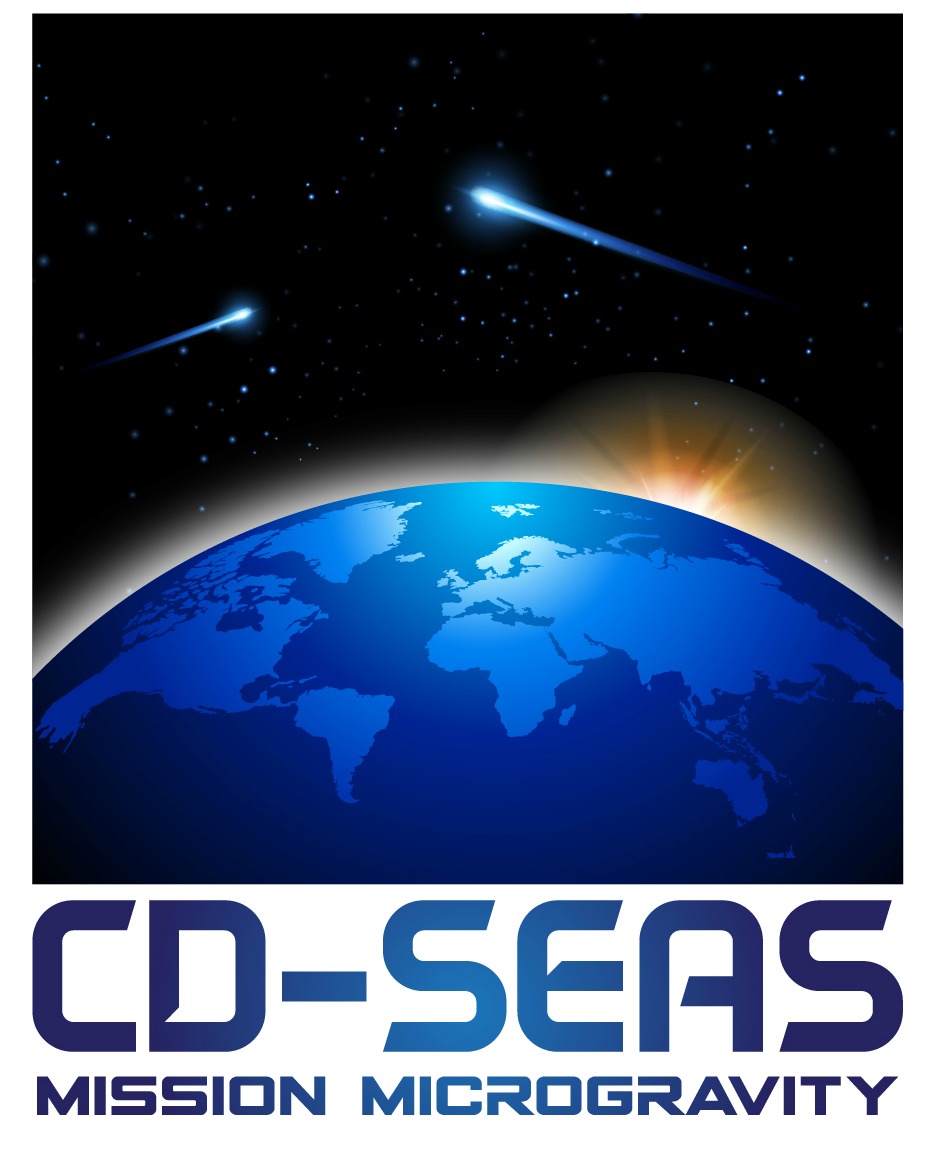Pharmaceutical Development and Antibiotic Effectiveness – Space is the Limit
By: Jonna Ocampo, Principal Investigator, CD-SEAS Mission Microgravity
Pharmaceutical antimicrobial effectiveness is paramount when subject to extreme environments such as weightlessness. This weightlessness in space is known as microgravity and can be similar to the act of hovering in scuba diving.
The significance of testing, synthesis, and purification of antimicrobial samples in orbit utilizing the International Space Station for microgravity research is crucial in the investigation and development of new and emerging antibiotics. It is vital because, in short-term parabolic flight, some of the antimicrobial compounds that were synthesized began to break apart, known as decomposition. These same compounds were tested in a lab before the flight and were effective at fighting bacteria. After the parabolic flight, the initial testing was to determine if these compounds were still intact. Unfortunately, some of the molecular makeup of these compounds showed decomposition due to the force, the G’s, of the flight and the exposure to several 30-seconds of zero gravity. If some pharmaceutical cannot survive in short-duration, extreme flight then this can create a limiting factor in the use of necessary medications for astronauts and long-term space travel.
A chalcone is a compound that is created with two starting materials. Interaction of these two substances occurs with the help of a catalyst. A catalyst allows these starting materials to undergo a reaction with the final goal of forming an end product. Research studies and literature show chalcones to have antimicrobial activity as well as antibacterial, antifungal, antioxidant, anti-inflammatory, anti-tumor, anti-malarial, and anti-viral properties.(2) This particular research involved a strong base catalyst, which initiates the reaction.
The chalcone compound is pertinent to the creation of a new antibiotic. Pharmaceutical antimicrobial effectiveness was necessary for the discovery of the compound’s molecular structure to withstand extreme environments, such as microgravity. The hypothesis is that the molecular breakdown of certain antimicrobials will become more prevalent when exposed to the accelerations of take-off and re-entry from orbital flight. This circumstance suggests that some antibiotics may not be effective at fighting bacteria in a microgravity environment.
In this research, the lab-synthesized chalcone compounds showed positive results in the ground studies and successfully tested biological assays with antimicrobial effectiveness against several known bacteria including Staphylococcus aureus , Escherichia coli, and Pseudomonas aeruginosa (1). Pseudomonas aeruginosa is a notably resistant strain of bacteria.
Many of the compounds have been lab tested, preflight, to 250 degree Celsius. The result was the disintegration of the compound with no volatility, which is important when a scientific experiment is being carried on a rocket-powered aircraft. For mitigating general emergency service during high altitude flight, it is necessary to prove the safety of an experiment and show it does not pose a hazard if it is exposed to a cabin climate change or goes on fire when exposed to high heat. Ground testing validation of safety protocol for exposure to increased temperatures is essential to the loss prevention requirements for inclusion on a future suborbital or an orbital flight.

Compound Derivative Series – Synthesis and Evaluation of Antimicrobials in Space (CD-SEAS) Mission Microgravity’s current flight campaign on the Falcon 20 at the National Research Council in Ottawa, Canada revealed an antimicrobial molecular decomposition of some of the derivative series of the chalcone compounds were becoming prevalent when exposed to extreme environments and short-term microgravity. This occurrence becomes significant when some antibiotics become less effective due to resistant strains of bacteria, and bacterial mutations in space. The biomedical experiment’s placement on the International Space Station would be ideal for the study of the compounds’ in their exposure to an extreme environment, which may be valuable to astronauts and also for the long-term habitation on other planets.
WORKS CITED:
1. Amato-Ocampo, J.; Carillo, R.; Ashburn, B.*; Kae, H.* Synthesis and Antimicrobial Evaluation of a Series of Substituted Chalcone Derivatives. Poster presented at the John A. Burns School of Medicine Biomedical Sciences and Health Disparities Symposium, Honolulu, 15-17 April 2015.
2. Kumbhar, D.D.; Waghamare, B. Y.; Pathade, G. r.; Pardeshi, S. K. Synthesis and Evaluation of Chalcones as an Anti-bacterial and Anti-fungal Agents. Der Pharmacia Lettre. 2014, 6, 224-229.
(Acknowledgements: Mahalo to Dr. Lance Erickson of Embry-Riddle Aeronautical University for his proposal support for CD-SEAS to receive acceptance for the suborbital reusable launch vehicle mission with Citizens in Space. Mahalo nui loa to Dr. Bradley Ashburn, Dr. Helmut Kae, Dr. Kabi Neupane, and Professor Alyssa Haygood for their availability, guidance, and support during the Hawaii 2014 INBRE III Summer Student Research Experience. Mahalo to Leeward Community College, Windward Community College, and Hawaii Pacific University for the use of their laboratories, Infrared Spectroscopy, and Nuclear Magnetic Resonance testing. The initial project was supported by a grant from the Institutional Development Award (IDeA) Networks of Biomedical Research Excellence (INBRE). The content is solely the responsibility of the authors and do not necessarily represent the official views of the National Institute of Health.)
CD-SEAS Mission Microgravity is a non-profit, biomedical company performing both ground-based and microgravity research involving synthesis and testing for the creation of new and potentially emerging antimicrobials. Jonna Ocampo is the Principal Investigator and Founder of CD-SEAS.
Picture credit: //wallpaperswide.com/earth_and_moon_from_space-wallpapers.html
The Medical Frontier (original posting)


